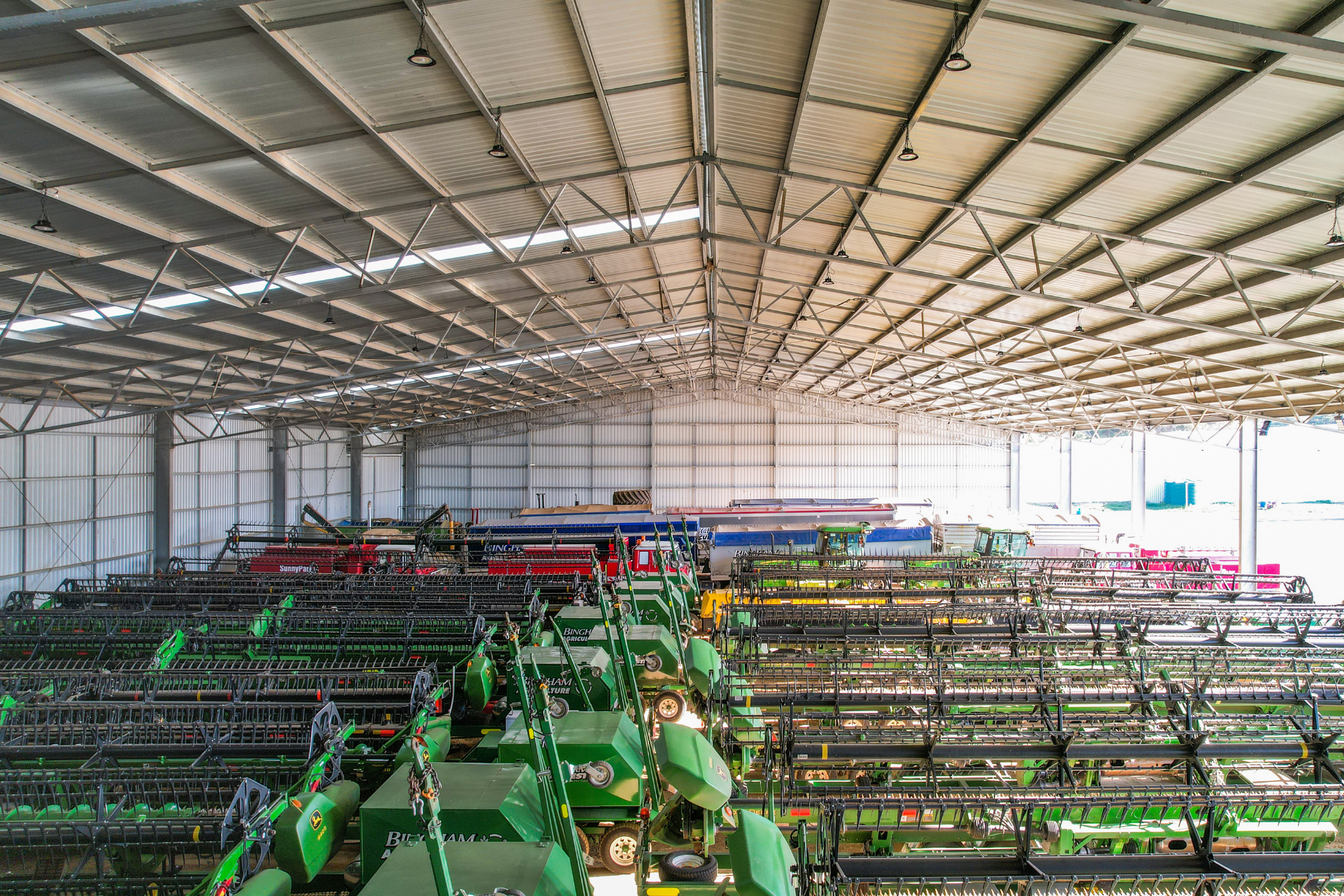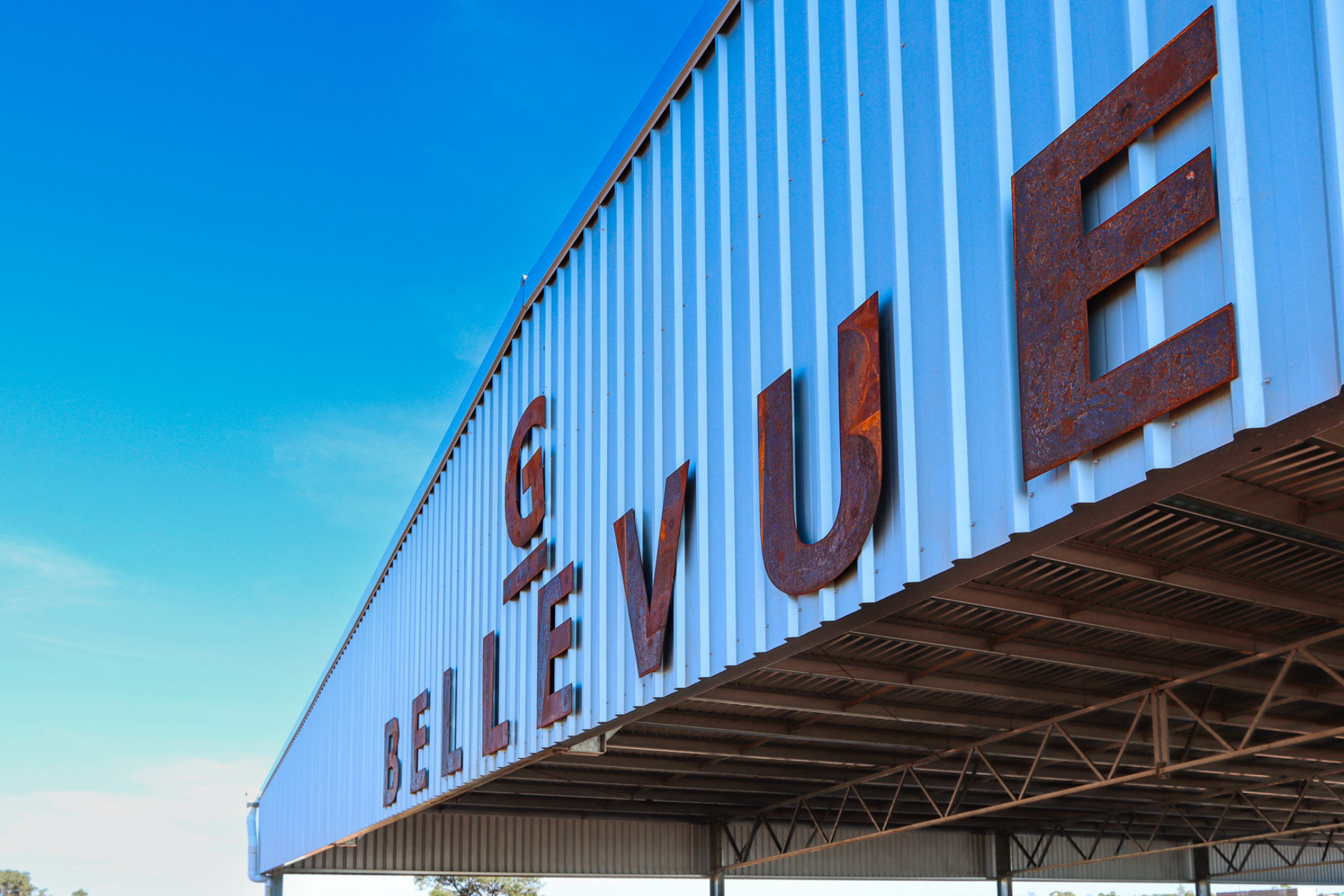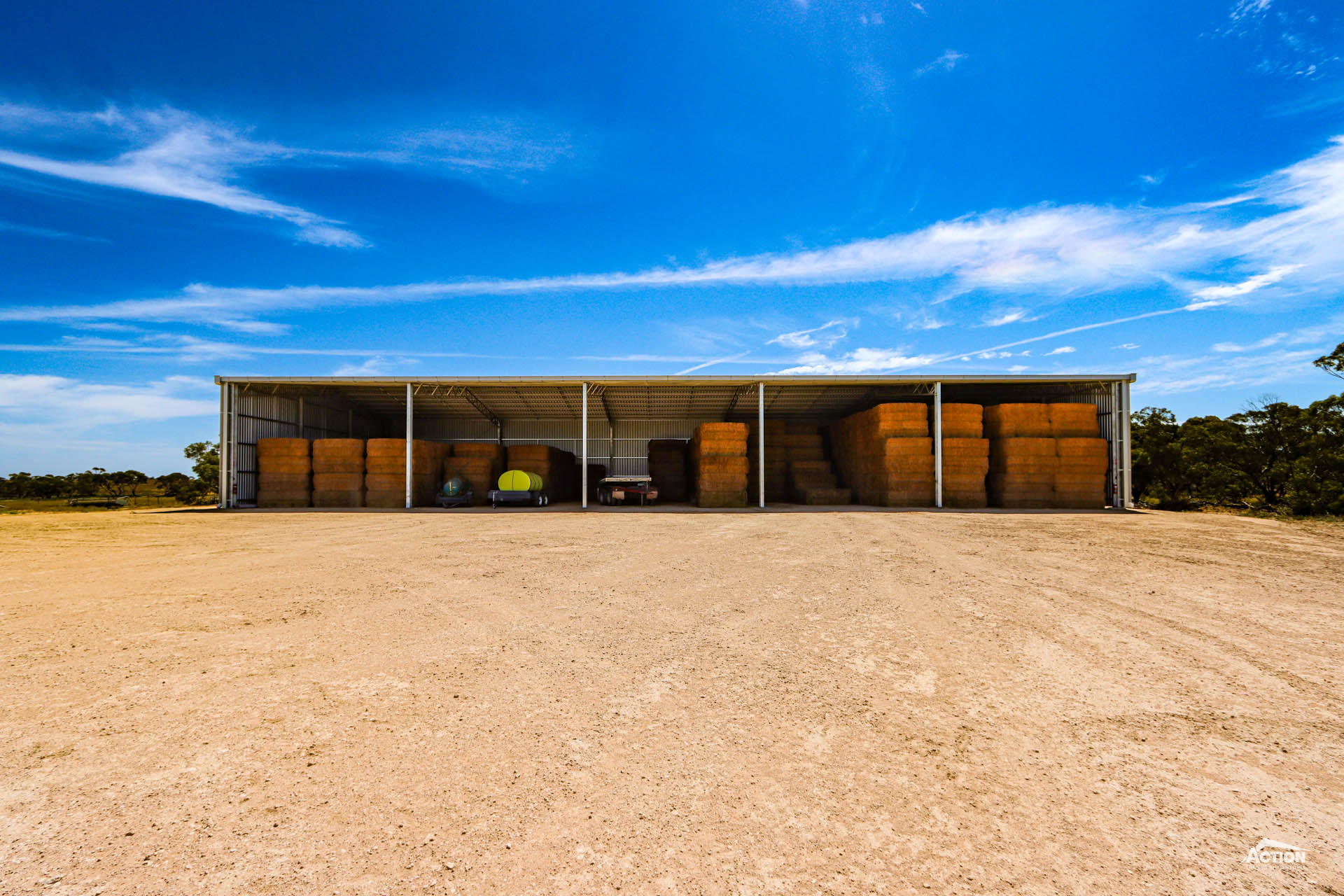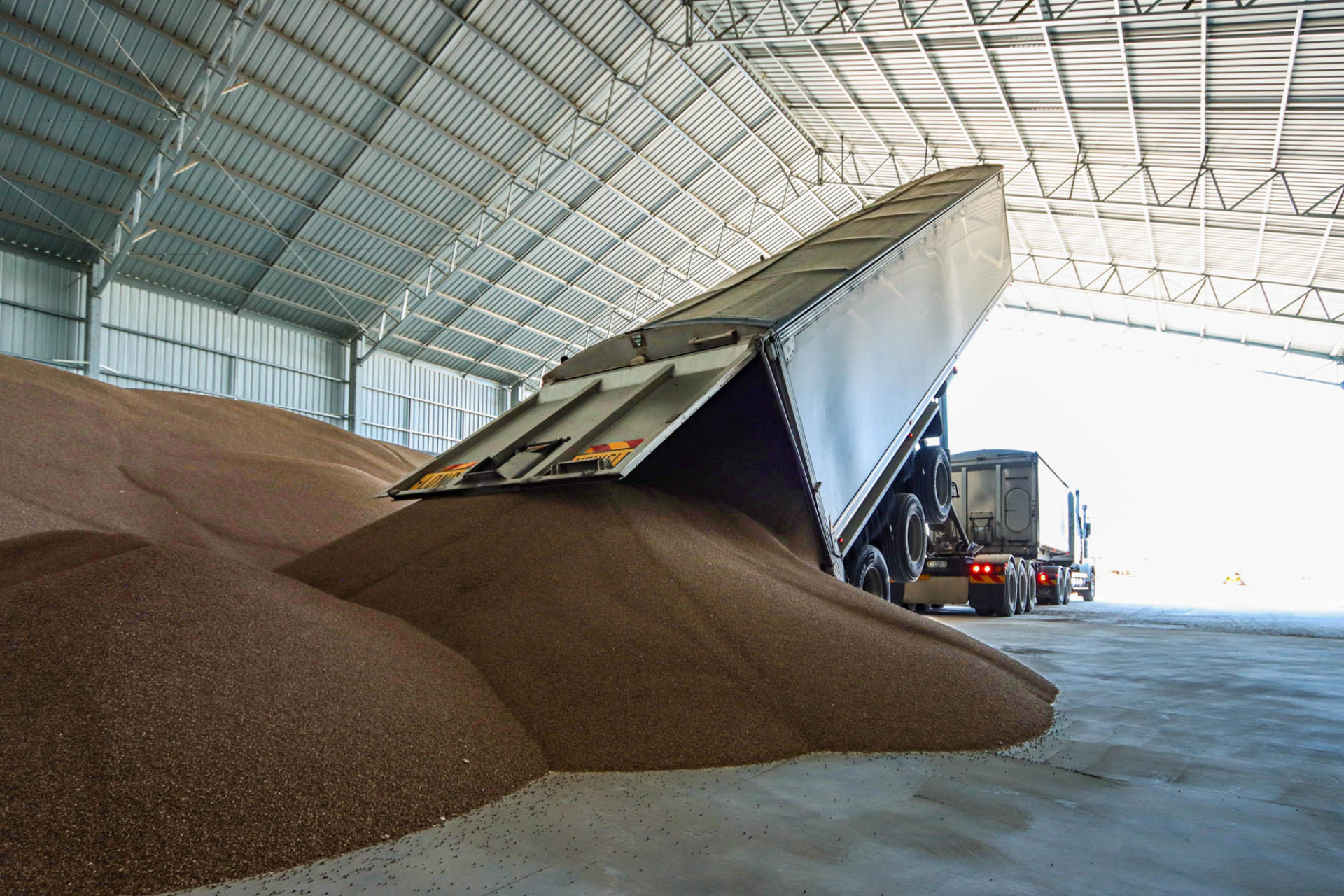The secret to a good farm machinery shed is a good farm machinery shed design. Choosing the right design for your machinery shed will ensure your new shed build works for you now and in the future.
If you are in the early stage of planning a new farm machinery shed build, a good starting point is to ask questions, like: What is the best machinery shed design? Or How can I customise my machinery shed build? And What size shed do I need for my machinery?
We answer all these questions in this article. And discuss the three main ways you can customise a machinery shed so that the design works for you. We also discuss access options and how to get the most out of your farm machinery storage shed.
If you are not 100 percent sure what design would work best for your project, then this is the article for you.
In this article:
-
What Is The Best Machinery Shed Design?
-
How Can You Customise A Machinery Storage Shed Design?
-
What Size Machinery Shed Do You Need?
-
What Are The Access Options For A Machinery Shed?
-
Useful Resources
What Is The Best Machinery Shed Design?
There is no clear-cut answer when it comes to the best machinery shed design as it is subjective. Generally speaking, the best machinery shed design is one that suits your machinery storage requirements right now, but also allows for future growth and expansion.
Which is why it is necessary to look at machinery shed design in conjunction with site layout and preparation, logistics and access requirements, other infrastructure such as silos and your plans for your farm in the future.
With that in mind the team at Action Steel have developed a range of standard farm machinery shed designs, spans and configurations that can be easily customised and tweaked to suit your machinery storage requirements.
This article includes ways and examples of how you can alter these designs. And our building consultants are always more than happy to discuss these with you and can quote several different options for you to compare and consider.
Next up are ways to customise your machinery shed with design ideas and features.
How Can You Customise A Machinery Storage Shed Design?
There are three main ways that you can customise your machinery shed design, these are shed configuration, cantilevered canopies and girder trusses.
1. The Shed Configuration
Choosing the right configuration for your machinery shed is one of the most important steps in the design process . And it depend on factors like what type of machinery you are storing and what you are hoping to achieve with your machinery storage.
For example, if all weather-protection is a high priority for your machinery storage then it would be worth considering a fully-enclosed machinery shed. This will provide the ultimate weather protection.
Or if you want to be able store hay in the shed in the future, a versatile farm shed configuration is the ‘open-front’ three-sided configuration. This has one of the long sides open, like the project pictured.
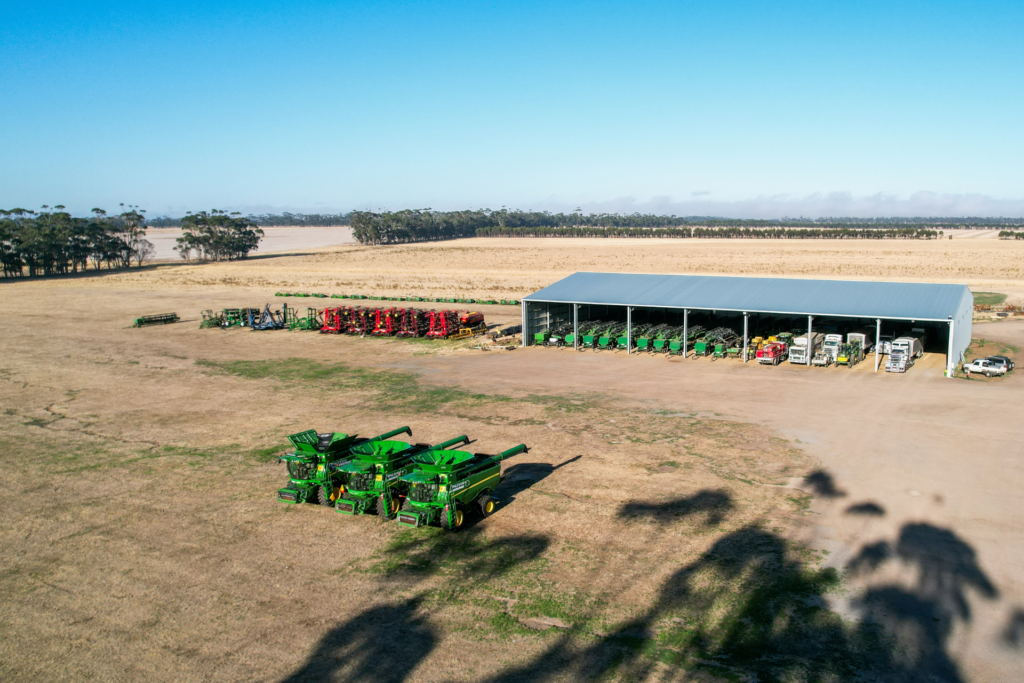
The other configuration option which has grown in popularity in recent years is the ‘drive-through’ or open gable end configuration. This configuration allows the full length of the shed to be used, provides wide access and prevents machinery from getting stuck at the back of the shed.
Another factor which may influence what configuration you choose, is whether you want to incorporate a workshop in your storage shed. There are a few ways to do this such as enclosing a bay or concreting a working area within your machinery shed.
What Is The Best Machinery Shed Configuration?
There are plenty of good reasons to choose any of these configurations – the fully-enclosed shed, the open-front shed or the drive-through shedB but they do all also have some drawbacks or inconveniences which may influence your choice.
The video below might also be useful in helping you choose the configuration for your machinery shed.
Now, with the configuration options discussed we are onto a popular trend for both hay sheds and machinery sheds – the addition of a cantilevered canopy.
2. Installing A Canopy
Installing a canopy on a shed is popular for a reason – or more accurately, a number of reasons – but the main reason is that it is a cost-effective way to achieve additional storage space and weather protection. And cantilevered canopies, aren’t just cost-effective they also have some really practical benefits.
Some of the other benefits of installing a canopy on a farm machinery shed, are:
- Sheltered access to the shed for loading and unloading trucks
- Quick and easy shelter for machinery, if, for example, weather turns inclement during harvest
- As there are no columns on the outside of the canopy to impede access, wide gear can be driven in undercover for storage, repairs or maintenance without being folded up
If you would like to learn more about canopies and how they can be used to customise your machinery shed, watch the video below. Lennie discusses the pros and cons of cantilevered canopies and girder trusses.
This leads us to our third way to customise your machinery shed: using girder trusses for a wider bay opening.
3. Installing A Girder Truss
As Lennie explains, girder trusses are a way to achieve a bay opening that is wider than the standard 8 metres to 9 metres bay spacings.
One of the key points that Lennie makes on girder trusses is that a girder truss (or girder beam) can provide bay openings of up to 18 metres. But, it is usually more cost-effective to design your shed with larger bay openings to start with (up to 12 metres wide). Or opt for an open-gable end shed configuration (up to 60 metres clear span).
So, if your machinery needs extra wide access, a girder truss can be a practical way to achieve this. But it may not necessarily be the most cost-effective way.
To ensure your machinery shed design is both practical and cost-effective, talk to our building consultants about quoting a few different options for your shed.
That is the three main ways to customise a machinery shed design but as you would well know, there is still plenty more to consider when designing a machinery shed!
And one of the most important considerations is the size of your machinery shed.
What Size Machinery Shed Do You Need?
You could easily argue that the size and dimensions of a shed are the most important detail of a shed build.
It doesn’t matter how many smart design features your shed has, if you can’t physically fit your machinery in your new machinery shed it defeats the purpose!
A lack of storage space is incredibly frustrating, so how can you avoid it?
Here are the main points to consider when working out how big your machinery shed needs to be – length, width and height.
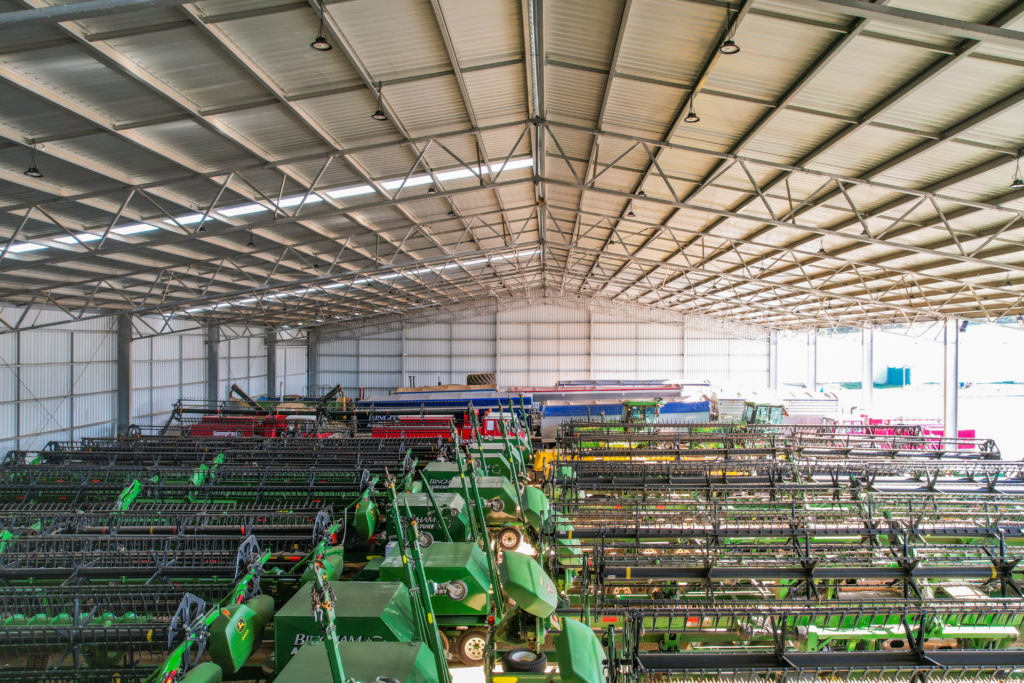
1. Length
The length that your machinery shed needs to be, can be determined by the machinery that you need to store and the configuration you choose.
Common bay spacings for machinery sheds include 8 metres, 8.5 metres and 9 metres, however, larger bay spacings such as 10 metres are becoming more common as machinery sizes increase.
2. Width
Our open web truss shed spans range from 12 metres clear span to 60 metres clear span, with our standard spans including 18 metres wide, 21 metres wide, 24 metres and 27 metres wide.
Like your shed length, the shed width can also be influenced by the machinery you will be storing in the shed. For example, a standard semi will require a 21-metre span whereas a b-double will require a 30-metre span.
3. Height
The height of your shed needs to be carefully planned. While it is easy to add extra bays onto an existing shed, increasing the height of a shed after it has been built is not so straightforward!
Usually, a minimum clearance height of six metres is adequate for most cropping operations. This provides enough clearance height for machinery and equipment like air seeders.
However, if you intend to install roller doors or sliding doors on your shed, you will have to allow an additional 500mm to your required clearance height to allow for the sliding door beam (or roller door drum).
Similarly, a girder truss or girder beam will also reduce the clearance height of a bay opening.
Most importantly, think about the future when choosing the size of your shed. Farm machinery is generally getting bigger and is likely to continue to get bigger. So, factor this into your shed design so that you can use your machinery shed for years to come.
Discuss the machinery you hope to store in your new shed with our building consultants so that they can take this into account when designing and quoting your shed.
What Are The Access Options For A Machinery Shed?
Choosing the right access options can make all the difference to how well your machinery shed design works.
There are three main access options that we discuss with our clients in the design stage, and we have already discussed two of them:
- Choosing an open gable end configuration for a wide access point
- Using a girder truss or girder beam to achieve a wide bay opening
- Installing sliding doors.
Sliding doors are common in both fully-enclosed lock up machinery sheds and open-front machinery sheds. For example, sliding doors are commonly installed on open-front sheds so that the machinery at the back of the shed can be accessed quickly and easily.
Here are two project examples that effectively use sliding doors to improve the access to the shed.
Useful Resources
Our Top 10 Tips For Preparing the Idea Shed Pad
Don’t underestimate the importance of good site preparation for your farm shed project! In this video Ben outlines our top 10 tips for a well-prepared shed site.
What Is The Required Thickness For A Concrete Slab?
Choosing the correct concrete slab thickness for your farm shed project can help avoid maintenance issues and further expense in the future.
The most common thickness for a shed slab is 150mm (6 inches), with one layer of reinforcing mesh. This is adequate for any farm machinery such as tractors. However, if you are driving fully loaded semis or B-Doubles across the slab, 170mm to 200mm is recommended. Another layer of reo mesh may also be required. If you think your shed will require a thicker slab, we can engineer a slab to suit whatever purpose.
Learn more about concrete slab thickness and requirements, here or watch the video below.
Our Latest Machinery Shed Brochure
Our latest machinery shed brochure is available for free download, here.
Simply fill out the form to access the brochure.
YOUR TRUSTED FARM SHED SUPPLIER
At Action Steel we are proud to be designing, manufacturing and constructing quality farm machinery sheds across Australia.
Storing your valuable machinery out of the weather in an Action Steel machinery shed and keeping your machinery well-maintained helps minimise downtime. And it could help you avoid being impacted by the current shortage of replacement parts and extended lead times for new machinery.
If you would like to discuss your farm shed project, or would like more machinery shed design ideas, call us on 1800 68 78 88.

